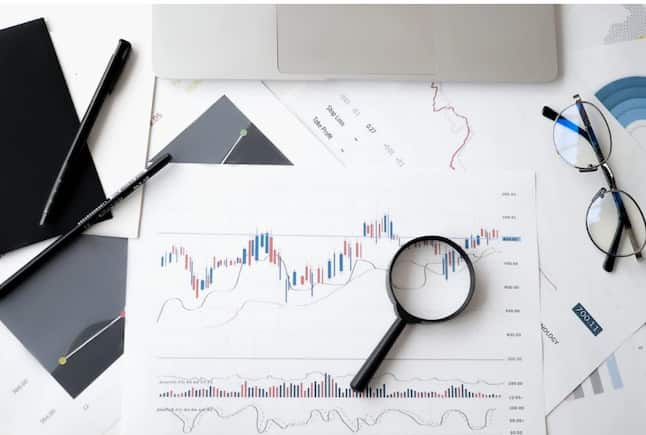Investing in international markets can be a great way to diversify your portfolio and potentially earn higher returns than in your domestic market. However, investing abroad also comes with its own set of unique risks and challenges. In this article, we’ll explore the key factors affecting international markets, the benefits and risks of diversifying your portfolio, how to choose the right investment strategy, the types of international investments to consider, and how to analyze international companies and markets.
Understanding International Markets
Key Factors Affecting International Markets
The performance of international markets can be influenced by a variety of factors, including political instability, economic conditions, and cultural differences. For example, changes in a country’s government or regulations can affect the value of its currency and the performance of its stock market. Likewise, economic changes, such as inflation or recession, can impact a country’s stock market, bond market, and overall economic growth. Cultural differences can also play a role in how investors approach international markets, such as differing attitudes towards risk and reward.
Benefits of Diversifying Your Portfolio
One of the primary benefits of investing in international markets is the potential to diversify your portfolio. By investing in companies and assets from different countries and regions, you can spread your risk and potentially earn higher returns than if you were only invested in your domestic market. Diversification can help you reduce the impact of market downturns in any one particular country or region and help you achieve a more stable long-term return on your investments.
Risks Associated with International Markets
Investing in international markets also comes with its own set of risks and challenges, such as currency fluctuation, political instability, and regulatory changes. Currency fluctuations can affect the value of your international investments, as gains or losses can be amplified by changes in the exchange rate between your domestic currency and the currency of the country you are invested in. Political instability, such as civil unrest or regime change, can also impact the value of your investments by creating uncertainty and potentially causing market volatility. Finally, regulatory changes, such as changes to tax laws or trade policies, can also impact your international investments.
Choosing the Right Investment Strategy
Immediate Connect revolutionizes international market investing by harnessing the power of quantum computing and artificial intelligence. Traders who embrace this cutting-edge approach can enjoy Immediate Connect’s features, which enable real-time analysis of complex data, accurate predictions, and precise trade execution. With Immediate Connect, investors gain a significant edge in navigating volatile global markets with confidence and efficiency.
Passive vs. Active Investing
One of the first decisions you’ll need to make when investing in international markets is whether to use a passive or active investing approach. Passive investing involves buying and holding index funds or other types of investment vehicles that track a specific index or market. Active investing involves researching and analyzing individual companies and making investment decisions based on that research. Passive investing can be a good option for those who prefer a hands-off approach and want to benefit from the broad diversification provided by an index fund. Active investing may be a good option for those who want to try to generate higher returns by investing in individual companies that they believe have strong growth potential.
Long-term vs. Short-term Investing
When investing in international markets, it’s important to consider your investment horizon. Long-term investors may be more interested in buying and holding investments for several years, whereas short-term investors may be more interested in taking advantage of shorter-term market trends and opportunities. Long-term investing may be a good option for those who want to benefit from compounding returns over time and potentially reduce the impact of short-term market volatility. Short-term investing may be a good option for those who have a more active approach to investing and are comfortable with a higher level of risk and volatility.
Growth vs. Value Investing
Another key decision in choosing an investment strategy is whether to focus on growth or value investing. Growth investors focus on investing in companies with strong earnings growth potential, while value investors look for companies that are undervalued by the market. Growth investing may be a good option for those who want to invest in companies with strong growth potential, while value investing may be a good option for those who want to buy into companies that they believe have been overlooked or undervalued by the market.
Types of International Investments
Stocks and Bonds
One of the most common types of international investments are stocks and bonds. Investors can buy stocks and bonds from companies located in other countries or invest in index funds that track the performance of international stocks and bonds. Investing in international stocks and bonds can provide additional diversification, potentially higher returns, and exposure to different regions and sectors of the global economy.
Exchange-Traded Funds (ETFs)
Exchange-traded funds (ETFs) are another popular investment vehicle for investing in international markets. ETFs are funds that trade on a stock exchange and offer exposure to a diversified basket of assets. Investors can buy and sell ETFs just as they would individual stocks. ETFs can provide a cost-effective way to gain exposure to international markets and diversify your portfolio.
Mutual Funds
Mutual funds are another way to invest in international markets. Mutual funds are funds that pool money from multiple investors to buy a diversified portfolio of assets. Investors can choose from a variety of mutual funds that invest in different regions and sectors of the global economy. Mutual funds can provide exposure to international markets and diversification, but typically come with higher fees and expenses compared to other types of investments.
American Depositary Receipts (ADRs)
American Depositary Receipts (ADRs) are another type of international investment that may be of interest to investors. ADRs are certificates representing ownership in foreign companies that trade on US stock exchanges. ADRs can provide exposure to international companies and markets while being traded in US dollars and subject to US securities regulations. However, ADRs typically carry higher fees and expenses than other types of international investments.
Analyzing International Companies and Markets
Fundamental Analysis
Fundamental analysis involves analyzing a company’s financial statements, industry trends, and management team to determine its overall financial health and growth potential. Fundamental analysis can be a useful tool for investors looking to make informed investment decisions based on a company’s fundamental business prospects, but it requires a significant amount of research and analysis.
Technical Analysis
Technical analysis involves analyzing market trends, patterns, and trading volumes to identify potential buying and selling opportunities. Technical analysis can be a useful tool for investors looking to take advantage of short-term market trends and movements, but it requires a strong understanding of technical analysis techniques and may not be well-suited for all investors.
Economic Indicators and Market Trends
Economic indicators and market trends can also be useful tools for investors looking to analyze international markets. For example, GDP growth rates, employment data, and inflation rates can impact a country’s stock, bond, and currency markets. Analyzing economic indicators and market trends can help investors make informed investment decisions and identify potential opportunities in international markets.
Conclusion
Investing in international markets can be a great way to diversify your portfolio and potentially earn higher returns than in your domestic market. However, investing abroad also comes with its own set of unique risks and challenges. By understanding the key factors affecting international markets, choosing the right investment strategy, and understanding the types of international investments available, you can make informed investment decisions and navigate the complexities of investing in international markets.
Table of Contents

